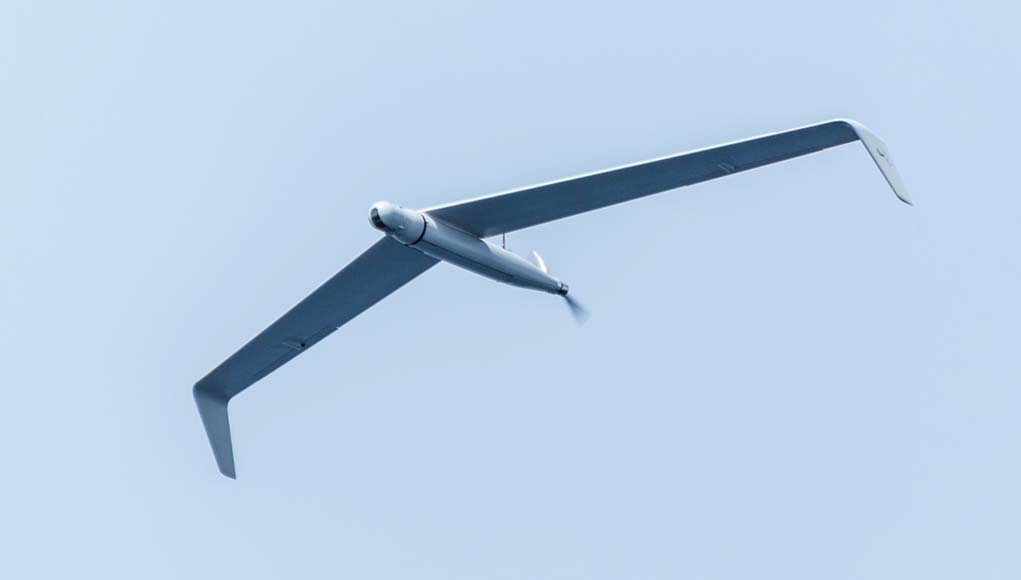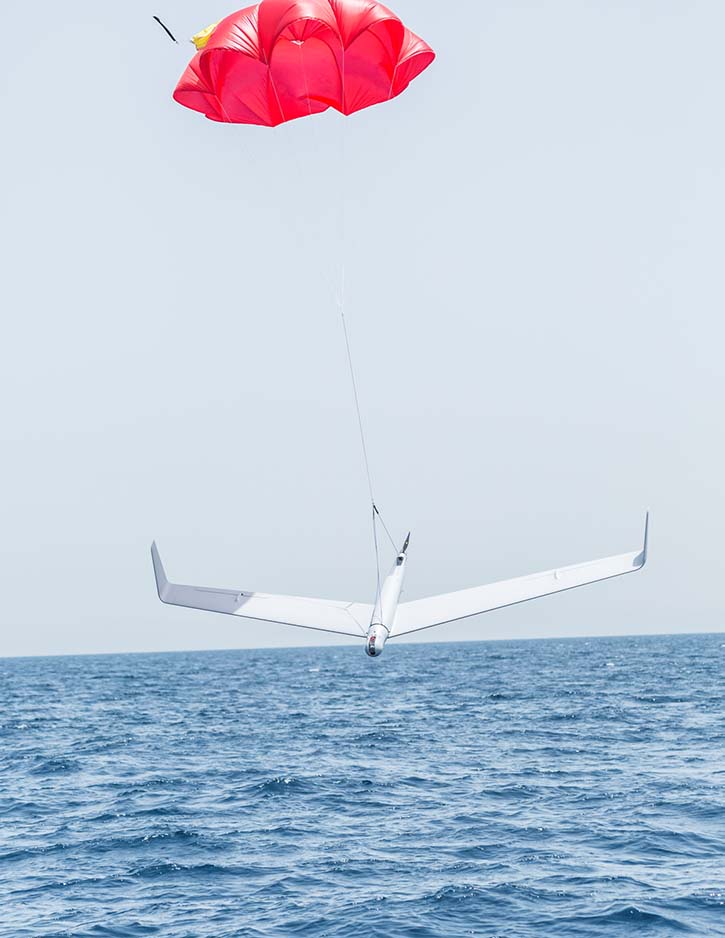Elbit Systems introduce today the Skylark C – the first naval member of its electrically powered mini-UAV family. Based on the operational and combat-proven Skylark I-LEX Mini UAS, the naval variant extends the Skylark reconnaissance and surveillance capabilities to the maritime domain. Inertial navigation system (INS) and a stabilized, electro-optical (EO) payload with a high-resolution thermal imager and color daylight camera that enables continuous day/night monitoring in diverse weather conditions. Designed with a ‘flying wing’ configuration Skylark C is heavier than Skylark I LEX but its larger energy sustains much longer mission endurance.
Operated as an organic asset on naval platforms of all sizes, Skylark C provides the capabilities to inspect maritime activities from a safe distance and observe targets from a bird’s eye view. It performs reconnaissance over the sea and coastal areas and performs continuous covert surveillance, thus extending the vessel’s ISR capabilities in range, rate, and quality of information obtained.
During the mission, high-quality day or night video is available in real time, captured via the stabilized EO/IR gimballed payload. The operators control the mission in ‘fly by camera’ mode, enabling intuitive operation and target tracking. Advanced image processing and functions supported by the system allow mission capabilities similar to larger drones.

The main advantages of the new, miniature drone are its autonomous flight capability; silent electrical propulsion and small dimensions its low visual and acoustic signature that makes it, suitable for covert operations such as naval special operations, border security, anti-terrorism and anti-piracy operations.

Rail-launched from a ship deck or small boat the Skylark C is operated by two operators from a portable Mission Control Unit (MCU). A unique attribute of Skylark C is the automatic, accurate recovery on water capability, employing Point Water Recovery (PWR) feature. This function is particularly important for small patrol boats and special forces that cannot support net arresting systems or other auxiliary recovery apparatus employed with larger drones.
At the end of the mission, the drone lands in the water, using parachute-based recovery to minimize impact. After landing the waterproof drone floats on water and retrieved by the operators. Mission preparation cycle, from retrieval to a new assignment, typically takes about 15 minutes.




















